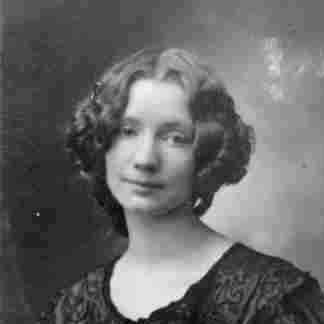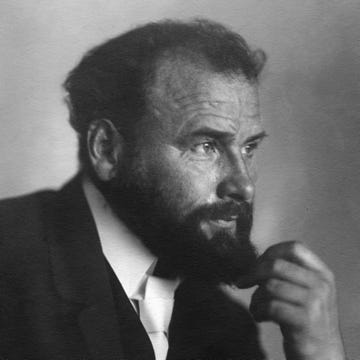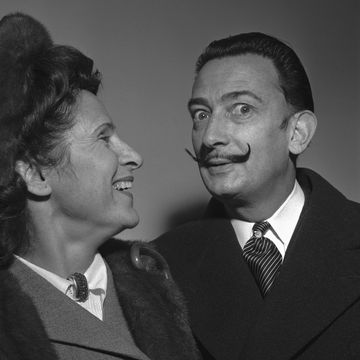(1886-1940)
Who Was Gerda Wegener?
Gerda Wegener grew up in Hobro and moved to Copenhagen as a teenager to pursue her artistic interests at the Royal Danish Academy of Fine Arts. She worked as a successful fashion illustrator for magazines such as Vogue and also painted erotic imagery of women. She married fellow artist Einar Wegener, who became Lili Elbe, one of the first-ever documented individuals to have received sex reassignment surgery.
Early Life, Marriage and Art Career
Gerda Marie Fredrikke Gottlieb was born on March 15, 1886, in the tiny rural province of Hammelev, Denmark, and grew up in the slightly larger city of Hobro. Gottlieb's small-town life as the daughter of a clergyman and her artistic inclinations left her craving more. She left home at the age of 17 to enroll at the Royal Danish Academy of Fine Arts in Copenhagen. There she met and fell in love with fellow artist Wegener (later Elbe). Gottlieb and Wegener were soon married at the ages of 19 and 22, respectively, and Gottlieb's career began to take off.
In 1904, Wegener's work was featured in the Charlottenborg Art Gallery (the official exhibition gallery of the Royal Danish Academy of Art) but without fanfare. In 1907, however, her art was pushed into the limelight after she won a drawing contest in Politiken, a Danish paper. From there she was able to build her career by illustrating for women's fashion magazines, which was incorporating an Art Deco sensibility throughout its pages.
Wegener’s fashion industry paintings featured beautiful women in chic attire, donning short bobs with full lips and almond-shaped eyes. Little did the public know that the person modeling for Wegener was her husband, Einar, who posed in women's clothing. These modeling experiences enabled Einar come to terms with his real gender identity, and soon after he began living his life as a female. He later adopted the name Lili Elbe and decided to undergo sex reassignment surgery in the early 1930s — becoming one of the first people to do so in history. When the news broke that Wegener's paintings of high fashion women were in fact artistic representations of a man, the gender-bending scandal was too much for the small town of Copenhagen. Along with her spouse who was now living as Lili, the pair settled into a lesbian lifestyle in the more liberal city of Paris in 1912.
Lesbian Erotica Artwork
With her new life as a lesbian in the avant-garde city of Paris, Wegener’s art became significantly more risqué. In addition to her fashion world portraiture that was featured in Vogue, La Vie Parisienne, as well as the intellectually elite Journal des Dames et des Modes, Wegener started painting nude women often in sexualized poses. Sometimes categorized as “lesbian erotica,” these sensual Art Deco style illustrations were captured in illicit art books. Her erotic paintings also found their way into controversial art exhibitions, which at times caused a public backlash.
Wegener relished the notoriety and the popularity that came with it. She threw lavish, over-the-top parties and became a well-known artist in France and Denmark. However, her public success had its consequences: after Christian X, the King of Denmark became aware of her marriage to Elbe, who had legally become a woman, the king declared their marriage null and void. In 1930, due to the legal issues that beset them from the king's decision, the couple thought it best to go their separate ways and did so graciously.
Later Years and Death
After separating from Elbe, Wegener married Major Fernando Porta, an Italian officer, aviator and diplomat, and moved with him to Morocco. However, the marriage was short-lived and the couple divorced in 1936.
Showing her continual support for Elbe, Wegener reportedly sent flowers to her on a regular basis. Wegener also wanted to encourage Elbe to feel better as the latter was recovering from her final surgery that would've made her reassignment complete; however, the surgery didn't go as planned, and as a result, Elbe died in 1931. Wegener was deeply affected by Elbe's death. By the time she returned to Denmark in 1939, her art was no longer in style and she struggled financially. Once a highly successful avant-garde artist, Gerda was now selling cheap, hand-painted Christmas cards. Her last art exhibition during her lifetime was in Copenhagen in 1939. Wegener died alone soon after in 1940.
Books, Movie and Exhibition
Wegener and Elbe's story continues to captivate on the page and on film. Man Into Woman, the story of Lili Elbe edited by Niels Hoyer, a friend of Wegener and Elbe, was published in 1933 and republished in the mid-1950s. In 2000, author David Ebershoff fictionalized Elbe's story in the novel The Danish Girl, which was adapted into a 2015 film, starring Eddie Redmayne as Elbe and Alicia Vikander as Wegener. In November 2015, Wegener's art was exhibited at the Arken Museum of Modern Art in Copenhagen.
QUICK FACTS
- Birth Year: 1886
- Birth date: March 15, 1886
- Birth City: Hammelev
- Birth Country: Denmark
- Gender: Female
- Best Known For: Gerda Wegener was a Danish fashion illustrator and painter of lesbian erotica in the 1930s. She was married to Lili Elbe, one of the first-ever documented recipients of sex reassignment surgery.
- Industries
- Art
- Astrological Sign: Pisces
- Nacionalities
- Danish (Denmark)
- Death Year: 1940
- Death date: July 28, 1940
- Death City: Frederiksberg
- Death Country: Denmark
Fact Check
We strive for accuracy and fairness.If you see something that doesn't look right,contact us!
CITATION INFORMATION
- Article Title: Gerda Wegener Biography
- Author: Biography.com Editors
- Website Name: The Biography.com website
- Url: https://www.biography.com/artists/gerda-wegener
- Access Date:
- Publisher: A&E; Television Networks
- Last Updated: April 6, 2021
- Original Published Date: September 9, 2015












